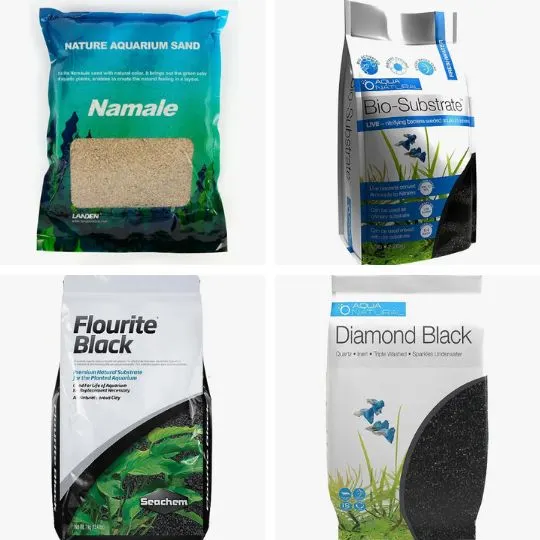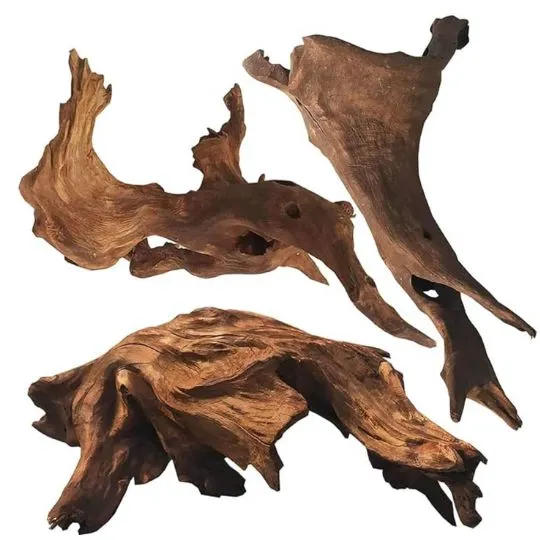The Essential Equipment For Aquascaping:
Introduction
Welcome to the wonderful world of aquascaping! If you've ever dreamed of creating your own underwater paradise, you're in the right place. If you're a newbie looking to dip your toes, understanding the essentials is key. This article will walk you through everything you need to start your underwater journey, from selecting the right tank, filters, CO2 systems to choosing the best plants and fish. Let's dive in!
Choosing The Right Tank
Size Matters
When it comes to tanks, size definitely matters. You might be tempted to start small, but a larger tank is often easier to maintain and provides a more stable environment for your aquatic life.
- Beginner Tanks: Aim for a tank that's at least 20 gallons. It might seem big, but trust us, you'll appreciate the extra space.
- Advanced Tanks: If you've got some experience under your belt, a 50-gallon tank or larger gives you more room for creativity and a diverse ecosystem.
Material Choices
Tanks come in glass and acrylic. Here's a quick breakdown:
- Glass Tanks: They're scratch-resistant and often cheaper. However, they're heavier and can break more easily.
- Acrylic Tanks: Lighter and more durable but prone to scratching. They also tend to be more expensive.
Nano Tank Recommendation: Take a look at the compact Aquatop Pisces 5-gallon Nano Tank, a modern cube-style aquarium bound by high-grade silicone for a clean and contemporary look. This isn't just an ordinary tank - it boasts an innovative multi-stage internal filter box system equipped with a submersible pump and easy-change filter cartridge packed with premium activated carbon. CHECK PRICE ON AMAZON HERE.

Lighting: Shedding Light on Your Underwater World
Light is not only essential for viewing your beautiful setup but also critical for plant growth through photosynthesis. Lighting systems for aquascapes should provide full spectrum light that mimics natural sunlight. Consider factors such as tank size, plant requirements and aesthetic preference when choosing lighting.
Types of Lighting
- LED Lights: Energy-efficient and long-lasting. They come in various spectrums, which is great for plant growth and enhancing the colors of your fish.
- Fluorescent Lights: Another popular option. They're good for beginners and work well for most plant types.
- Metal Halide Lights: These are for serious aquascapers who want to grow high-light plants. They produce a lot of heat, so be prepared to manage the temperature.
*Lighting System Recommendation - Hipargero Aquarium Light - 3rd Generation A029 Aquarium LED Light 30 Watts Saltwater Light with Touch Control. 5W LED Chips for Coral Reef Nano Fish Tank with Timer & Screen. An excellent and popular LED lighting system. CHECK PRICE ON AMAZON HERE
Filtration Systems: Keeping It Clean
Why Filtration is Key
A good filtration system is the backbone of a healthy aquarium. It keeps the water clean, removes toxins, and provides a stable environment for your aquatic inhabitants.
Types of Filters
- Internal Filters: Great for smaller tanks. They’re easy to install but can take up valuable space inside the tank.
- External Filters: Ideal for larger tanks. They’re powerful and keep the tank uncluttered.
- Sponge Filters: Perfect for breeding tanks and small setups. They provide gentle filtration and don’t harm delicate fry.
*Filtration System Recommendation: - Here's a really affordable filter system for your nano aquascaping tank and a great choice if you're a beginner. Extremely quiet in operation, using sponge bio ceramic media balls, this double filter is also okay to be used in a saltwater environment. Check out the AQQA Aquarium Electric Power Sponge Filter. CHECK PRICE ON AMAZON HERE
CO2 Systems: Breathing Life into Your Plants
Do You Need CO2?
Not all aquascapes require CO2, but if you’re aiming for lush plant growth, it’s a game-changer. CO2 systems provide the carbon dioxide that plants need for photosynthesis, leading to vibrant, healthy plants.
Types of CO2 Systems
- Pressurized CO2 Systems: These are the most effective but can be expensive and complex to set up.
- DIY CO2 Systems: Cheaper and simpler, but they require more maintenance and don’t provide consistent CO2 levels.
*CO2 System Recommendation: - A complete system with a 2.5L SUS304 stainless steel bottle, regulator, precision needle valve, and an easily adjustable bubble counter. With all the safety features you need, the Fzone Aquarium CO2 Generator System is great value for money and will help enhance your plant growth. CHECK PRICE ON AMAZON HERE
Substrate: The Foundation of Your Aquascape
Types of Substrates
The substrate you choose affects plant growth, water chemistry, and the overall look of your tank.
- Gravel: Common and inexpensive. It’s great for fish tanks but not the best for plants.
- Sand: Offers a natural look but can compact over time, which affects plant roots.
- Soil: Best for planted tanks. It’s nutrient-rich and promotes healthy plant growth.
Setting Up the Substrate
Layering is key. Start with a nutrient-rich base layer if you’re using gravel or sand, then top it off with your chosen substrate. This helps plants root and thrive.
Substrate Recommendations
For optimal plant growth, consider using high-quality aqua soil like ADA Aqua Soil Amazonia. This substrate is rich in nutrients and ideal for planted aquariums.
Hardscape materials like rocks and driftwood add depth and texture to your design, creating a natural aesthetic.
*Substrate Recommendations: Check out a variety of substrates, perfect for your aquascaping tanks USING THIS LINK
Plants and Decor: Bringing Your Aquascape to Life
Choosing Plants
Different plants thrive in different conditions. Here are a few to consider:
- Beginner Plants: Java Fern, Anubias, and Cryptocoryne. They’re hardy and don’t require CO2 or intense lighting.
- Advanced Plants: Glossostigma, Hemianthus, and Rotala. These need more light and CO2 but offer stunning visuals.
Adding Hardscape Elements
Rocks, driftwood, and other decor items are essential for creating depth and interest in your aquascape.
- Rocks: Use different sizes to create a natural look. Lava rock, dragon stone, and Seiryu stone are popular choices.
- Driftwood: Adds a rustic touch and provides hiding spots for fish. Make sure to soak it beforehand to avoid tannins discoloring the water.
*Hardscape Recommendation:- Driftwood is particularly effective at making your tank look that little bit special. These WDEFUN driftwood pieces are perfect and are a popular choice for many enjoying aquascaping. CHECK PRICE ON AMAZON HERE
Stocking Your Aquarium
Choosing Fish and Invertebrates
Your fish and invertebrates are the stars of the show. Make sure to choose species that are compatible with your plants and each other.
- Beginner Fish: Neon Tetras, Guppies, and Corydoras are hardy and peaceful.
- Advanced Fish: Discus, Dwarf Cichlids, and certain shrimp species. They require more specific water conditions and care.
Acclimating Your New Inhabitants
Don’t just dump your fish into the tank. Acclimate them slowly to reduce stress and increase survival rates. Float the bag in the tank to equalize the temperature, then gradually mix tank water into the bag over an hour.
Maintenance: Keeping Your Aquascape Beautiful
Regular Tasks
- Water Changes: Perform weekly water changes of 20-30%. This keeps water parameters stable and removes waste.
- Trimming Plants: Regular trimming encourages healthy growth and prevents plants from overshadowing each other.
- Cleaning Equipment: Keep filters, heaters, and other equipment clean to ensure they function properly.
Monitoring Water Parameters
Invest in a good water testing kit and regularly check pH, ammonia, nitrite, and nitrate levels. Stability is key to a healthy tank.
Essential Aquascaping Tools
Just as gardeners need specific tools, aquascapers require specialized equipment for planting and maintenance. Essential tools include:
- Tweezers (for planting delicate stems)
- Scissors (for precise pruning)
- Substrate spatula (for arranging soil)
*Aquascaping Tool Set Recommendations:- The Liveek Aquarium Aquascape Tool Kit is perfect for keeping your tank in tip-top condition. This 4 in 1 Anti-Rust in stainless steel tool set is a popular hobbyist choice. CHECK PRICE ON AMAZON HERE
Conclusion
While setting up an aquascape requires some initial investment in equipment, the breathtaking underwater world you create makes it all worthwhile. Remember - quality equipment not only ensures healthy living conditions for your aquatic inhabitants but also makes maintenance easier for you!
Call-to-Action
Ready to take the plunge into the world of aquascaping? Check out our other blog posts for more detailed guides on equipment selection based on different aquascape styles.
Eager to get started? Check out our equipment review posts offering a curated selection of top-quality aquascaping tools, tanks, lighting systems and more.













